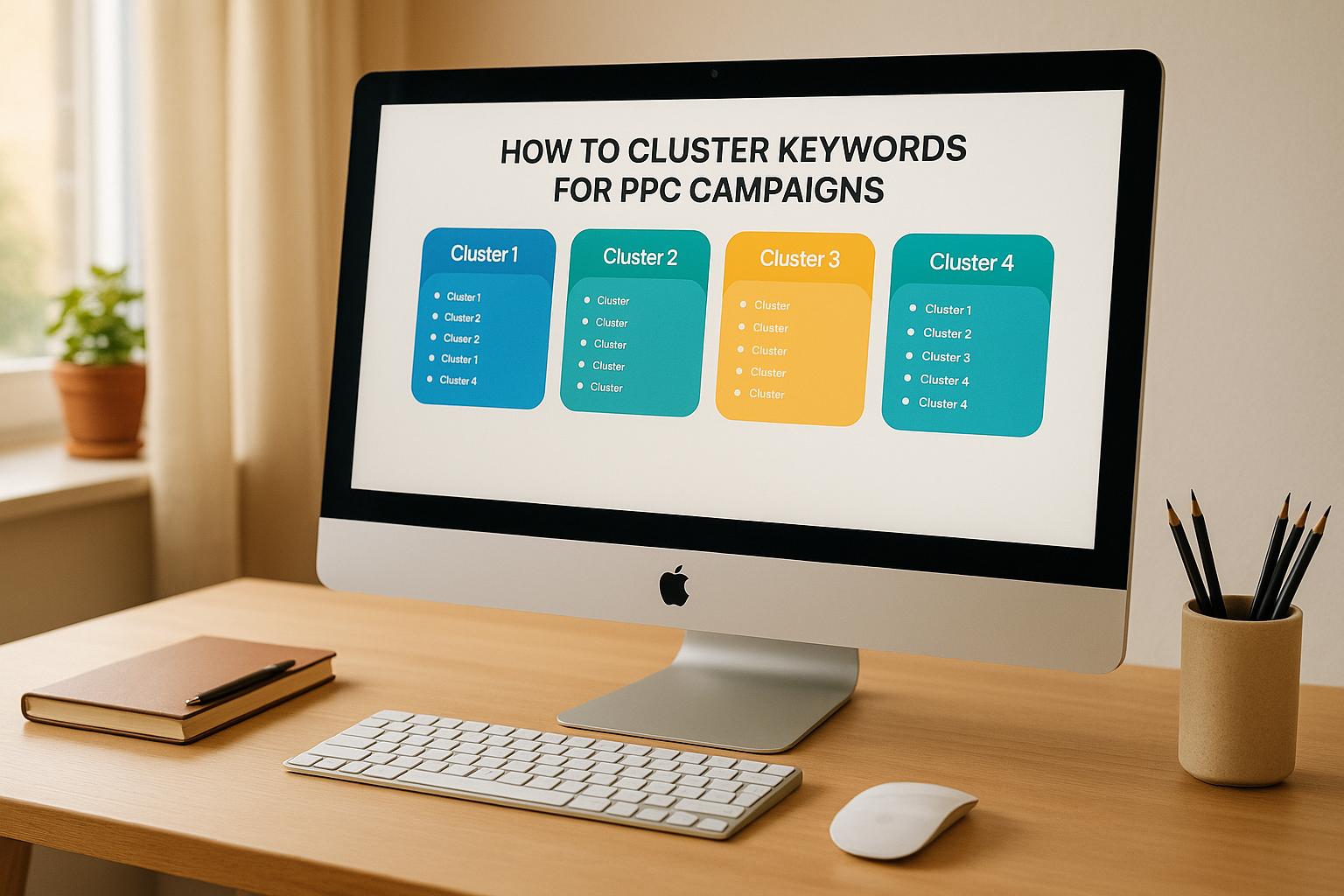Social media has transformed how businesses collect and display customer feedback. Platforms like Facebook and Instagram make it easier for customers to share their experiences, which helps businesses build trust, increase visibility, and drive sales.
Key takeaways:
- Visibility matters: Social media reviews are highly shareable and feel personal, making them more influential than traditional reviews.
- Features to leverage: Facebook’s Recommendations and Instagram’s tagging system help customers share feedback effortlessly.
- Timing and personalization: Asking for reviews shortly after a positive customer experience increases response rates.
- Automation tools: These simplify review collection while maintaining a personal touch.
- Showcase reviews: Highlight positive feedback on your profiles to encourage more customers to share their experiences.
Auto-Posting Google Reviews to Social Media with GoHighLevel | Debbi Starr
Setting Up Social Media Profiles for Reviews
Your social media profiles are the starting point for gathering customer reviews. A well-prepared profile not only looks professional but also makes it easy for customers to leave feedback. The goal is to ensure your business is not only accessible but also inviting for reviews.
Activating Review Features on Social Media Platforms
Different social media platforms have their own ways of handling reviews, so it’s important to know how to activate these features to maximize feedback from your audience.
On Facebook, you can enable Recommendations through your business page settings under "Templates and Tabs" in the Ratings and Reviews section.
"Facebook Recommendations are a feature on Facebook that allows users to provide feedback about their experiences with businesses, services, or products." – EmbedSocial
For LinkedIn, reviews are only available through Service Pages, not standard Company Pages. To start, set up a LinkedIn Service Page and use the platform's built-in tools to invite reviews. LinkedIn provides 20 invitation credits, and when you mark a project as complete, clients are automatically prompted to leave a review.
Instagram doesn’t have a formal review system. Instead, you can encourage customers to tag your business in their posts and stories, turning their content into informal testimonials.
By setting up these features, you create a foundation for authentic, user-generated feedback that enhances your online presence.
Creating Complete and Accurate Profiles
A polished and complete profile builds trust and encourages customer interaction. Begin by identifying your target audience, ensuring every aspect of your profile appeals to their interests and needs. Craft a headline that highlights your business’s unique value - something like "Farm-to-Table Dining in Downtown Portland" for a restaurant.
Use a high-quality profile picture, typically your logo, and select background images that reflect your brand’s personality. Keep your contact details accurate by conducting regular updates. Your profile summary should act as a quick elevator pitch, focusing on how your business benefits customers.
Once your profiles are fully set up, you can shift your attention to using design and messaging strategies to boost engagement.
Using Design and Messaging to Encourage Customer Interaction
Good design and clear messaging play a crucial role in encouraging customer engagement. Consistent branding across all platforms ensures a unified experience, which helps build trust and recognition. Use pinned posts to showcase customer testimonials or provide simple instructions on how to leave reviews. This keeps the focus on feedback without being overly pushy.
Incorporate clear calls-to-action to make it easy for customers to engage. For example, use Facebook story highlights or Instagram’s business tools to spotlight customer satisfaction and motivate others to share their experiences.
Responding promptly to comments and messages shows you value customer input. When potential reviewers see your active engagement, they’re more likely to leave positive feedback themselves.
Getting Customers to Leave Reviews on Social Media
Once your profiles are polished and visually appealing, it’s time to focus on actively gathering customer reviews. The secret lies in thoughtful timing, personalized outreach, and tapping into user-generated content. By tailoring your approach to each customer’s experience, you can encourage more meaningful feedback and boost engagement.
Timing Review Requests for Best Results
When it comes to asking for reviews, timing makes all the difference. Customers are most likely to leave positive feedback when their experience is still fresh and they feel satisfied with your product or service.
For retail businesses, sending review requests 24-48 hours after delivery confirmation works well. This gives customers enough time to try the product while it’s still top of mind. If you’re in a service-based industry, aim to follow up within 2-3 days after completing a project or delivering a service.
Timing also depends on the season. Avoid major holidays, when people are often too busy to respond, and instead focus on quieter periods like mid-January or early September. Additionally, check your social media analytics to see when your audience is most active. If your followers engage most on Tuesday evenings or Saturday mornings, schedule your review requests during those windows.
Don’t forget about follow-ups. If you don’t get a response, wait two weeks before sending a gentle reminder. Bombarding customers with multiple requests in a short time can come across as pushy and harm your relationship with them.
Creating Personalized Review Requests
A generic “Please leave us a review” often gets ignored. To stand out, craft personalized messages that make customers feel valued and recognized. When you reference specific details about their experience, they’re more likely to respond.
For instance, instead of a bland request, try something like: “Hi Sarah, we hope you’re loving the oak dining table you ordered! We’d really appreciate it if you could share your thoughts about our service and product quality.”
Recognize their loyalty by mentioning how long they’ve been a customer or referencing previous positive interactions. Long-term customers often feel a stronger connection to your business and are more willing to help when their loyalty is acknowledged.
Match your tone to your brand’s personality. A trendy clothing boutique might say, “How are those new boots treating you?” while a financial services firm could use a more formal approach, like “We hope the consultation met your expectations. We’d love your feedback.”
Make it easy for them by including direct links to your review platforms and suggesting what to comment on. For example: “If you have a moment, we’d love a quick review about our customer service or product quality!”
If you know the customer well, consider their personality. Some people prefer short, straightforward messages, while others might appreciate a more detailed and personal touch.
Using User-Generated Content and Check-Ins
User-generated content (UGC) and location check-ins are excellent tools for encouraging reviews. They feel natural and help create a sense of community around your brand.
For example, offer small perks like discounts or freebies for Facebook check-ins at your location. These incentives not only encourage reviews but also leave customers with a positive impression of your business.
Create Instagram-worthy spaces in your store or encourage customers to share photos of your products in action. When they tag your business in their posts, show genuine appreciation and gently suggest they share more about their experience in a review.
Use branded hashtags to gather and share stories from your customers. A restaurant might encourage #MyBestMealAt[RestaurantName], while a fitness studio could promote #My[StudioName]Journey. When customers use these hashtags, engage with their posts and invite them to leave a detailed review.
When you share customer content on your own social media (always with permission), it makes them feel appreciated and seen. This recognition often leads to more formal reviews. Plus, it shows your audience that you genuinely value their experiences.
Lastly, respond to user-generated content quickly and authentically. Thank customers for sharing, ask follow-up questions, and invite them to elaborate in a review. This kind of engagement not only strengthens relationships but also creates a positive cycle where customers feel heard and valued.
The goal is to make asking for reviews feel like a natural extension of the great relationship you’re building through social media. By focusing on timing, personalization, and user-driven content, you’ll encourage more customers to share their experiences.
sbb-itb-5be333f
Using Automation Tools for Review Generation
Automation tools can simplify the process of collecting reviews while still keeping a personal touch intact. While personalized outreach works well, managing it manually becomes challenging as your business grows. Automation steps in to handle repetitive tasks, allowing you to maintain meaningful connections with your customers. The trick lies in balancing efficiency with authenticity.
Benefits of Automated Review Requests
One of the biggest perks of automation is consistency. Unlike manual efforts where follow-ups might get missed due to busy schedules, automated systems ensure every customer gets a review request at the right time. This steady communication often leads to a higher volume of reviews by keeping your brand on your customers' radar.
Automation also helps reduce errors. Forget duplicate messages or inconsistent communication - these tools handle the details for you, saving time and avoiding awkward mistakes.
Another advantage is scalability. Whether you’re working with a few dozen customers or thousands, automated systems can adjust seamlessly to your needs. This is especially useful for businesses with seasonal spikes in activity, as the tools can handle increased demand without requiring extra manpower.
With automation, response tracking becomes much easier. You can analyze which templates get the best results, pinpoint the most effective times to send requests, and tweak your approach based on actual data rather than guesswork.
Automation tools also offer multi-platform coordination, ensuring your review requests don’t overlap awkwardly across different channels. For instance, instead of bombarding a customer with simultaneous requests on Google, Facebook, and Instagram, the system spaces them out in a way that feels natural.
Connecting Automation Tools with CRM Systems
Integrating automation tools with your existing business systems can create a smooth, efficient workflow for generating reviews. For example, when your point-of-sale system logs a completed transaction, it can automatically trigger a review request sequence.
CRM integration takes it a step further by allowing you to segment your customers. The automation tool can use details like purchase history and previous interactions to tailor requests. Long-time customers might receive a different tone or message than first-time buyers, and high-value clients could get more personalized outreach.
For online retailers, e-commerce platform connections are especially helpful. When an order is marked as "delivered", the system can wait a pre-set amount of time (like 24–48 hours) before sending a review request. This ensures the timing aligns with the customer’s actual experience.
Service-based businesses can benefit from service scheduling software integration. For instance, a dental office could automatically send a review request 48 hours after a cleaning, or a landscaping company might follow up a week after completing a project.
If you use an email marketing platform, synchronization ensures your messages don’t overlap. For example, if a customer just received a promotional email, the system can delay the review request to avoid overwhelming them with too many messages at once.
Setting up these connections often involves API integrations, which allow different systems to share information automatically. Most modern tools make this process straightforward.
Data synchronization is another key feature. When a customer updates their contact information in your CRM, the automation tool gets the update too. This prevents review requests from being sent to outdated email addresses or phone numbers.
Customization is also a big plus. With workflow customization, you can design unique sequences for different customer types or scenarios. For instance, a restaurant might create separate workflows for dine-in guests, delivery orders, and catering clients, each with tailored timing and messaging.
Finally, reporting integration brings everything together by combining review data with broader business metrics. You can see how review requests impact sales, customer loyalty, and other key indicators, helping you refine your overall strategy.
While automation can save time and effort, it’s not a "set it and forget it" solution. Regularly reviewing and tweaking your system is essential. Customer preferences evolve, social media platforms introduce new features, and your business changes over time. By staying on top of these shifts, you’ll ensure your automated system continues to deliver results.
Proper Incentives and Displaying Reviews
Once you've mastered gathering reviews, the next step is to use thoughtful incentives and make those testimonials shine. These strategies not only build trust but also encourage even more feedback.
Offering Incentives the Right Way
Incentives can be a great way to encourage reviews when done ethically and transparently. Think small discounts, shoutouts by featuring customer testimonials, early access to products, or even donations to a charity on behalf of the reviewer. Whatever you choose, make sure to disclose the incentive upfront - this isn't just good practice, it's required by the FTC.
One key tip: Offer the same incentive no matter what the review says. This ensures fairness and keeps the process ethical. These incentives not only invite feedback but also create opportunities to highlight those reviews later.
Making Reviews Visible to Spark More Feedback
People trust what they can see. Highlighting customer reviews on your social media channels is a powerful way to build social proof. Whether it’s a dedicated post showcasing a glowing testimonial or weaving reviews into interactive content, visible feedback fosters trust and encourages others to join in.
Don't stop there. Publicly responding to reviews - whether positive or negative - shows that you value customer opinions. It also sends a message to potential reviewers that their voices will be heard and appreciated.
When you align these efforts with your overall social media strategy, you’ll keep the feedback loop alive and well.
Balancing Incentives and Visibility
By combining well-thought-out incentives with prominently displayed reviews, you create a system that inspires ongoing, honest feedback. It’s a win-win for both you and your customers.
Conclusion: Using Social Media to Boost Reviews
Social media has reshaped the way businesses gather and showcase customer feedback. With features like detailed profiles and built-in review tools, it’s now easier than ever for customers to share their experiences. This opens up more opportunities to generate reviews while reinforcing the importance of a thoughtful and strategic approach.
A strong foundation starts with a well-crafted profile and timely review requests. Integrating CRM-connected automation can simplify the review collection process while still maintaining the personal touch that encourages customer responses. The key is consistency - regular, genuine interactions are far more effective than occasional bursts of activity. This aligns with the proven methods for generating reviews through social media that we’ve explored earlier.
When combined with smart incentives and prominently displayed reviews, this approach creates a positive feedback loop. Authentic, visible reviews not only build trust but also encourage others to share their experiences. Over time, this snowball effect can turn into one of your most powerful marketing tools, strengthening your brand’s credibility.
For even greater impact, integrate your social media review strategy into a broader digital marketing plan. Resources like the Top SEO Marketing Directory can help you find tools to optimize your SEO and content, ensuring your glowing reviews gain visibility across search engines. This way, your positive feedback reaches potential customers at every stage of their journey.
FAQs
How can businesses use social media platforms to encourage customers to leave reviews?
Businesses can tap into the power of social media platforms like Facebook and Instagram to gather customer reviews by fostering direct engagement with their audience. A good starting point is reaching out to happy customers with personalized messages or posts, kindly asking them to share their feedback. Sweetening the deal with incentives - like discounts, exclusive offers, or fun contests - can also boost participation.
Visuals are a game-changer here. Share photos, videos, or even customer testimonials that showcase positive experiences. Not only does this highlight your brand, but it also inspires others to leave their own reviews. To make things even easier, include direct review links in your posts or stories - simplicity goes a long way. Lastly, tagging customers in your posts or responding thoughtfully to their comments builds trust and a sense of community, which naturally encourages more engagement and reviews.
How can businesses effectively time and personalize review requests to get more customer responses?
To boost customer response rates, focus on timing and personalization when asking for reviews. Aim to send your request within 2–3 days of the customer's interaction with your product or service. This keeps the experience fresh in their mind, making your request feel relevant and timely.
Make your message personal. Use the customer's name, mention their recent purchase or interaction, and explain why their feedback is important. A thoughtful, genuine tone can go a long way in encouraging responses. On social media, timing is everything - ask for reviews during or right after positive interactions, like engaging posts or stories.
By acting quickly, tailoring your message, and choosing the right moment, you can greatly increase the chances of gathering meaningful customer reviews.
How can businesses use automation tools to collect reviews efficiently while keeping a personal touch?
Automation tools make gathering reviews much easier by working directly with platforms like Google or Yelp to send out review requests automatically. These tools can sync with your current systems, creating a smooth process for both requesting and managing customer feedback.
To keep things personal, businesses can use customizable templates that include the customer’s name and refer to their specific experience. AI-powered messaging takes this a step further, adding an extra layer of personalization to make interactions feel more genuine. Plus, setting up alerts for critical reviews ensures you can quickly step in when needed, helping maintain trust and keeping customer satisfaction front and center.


